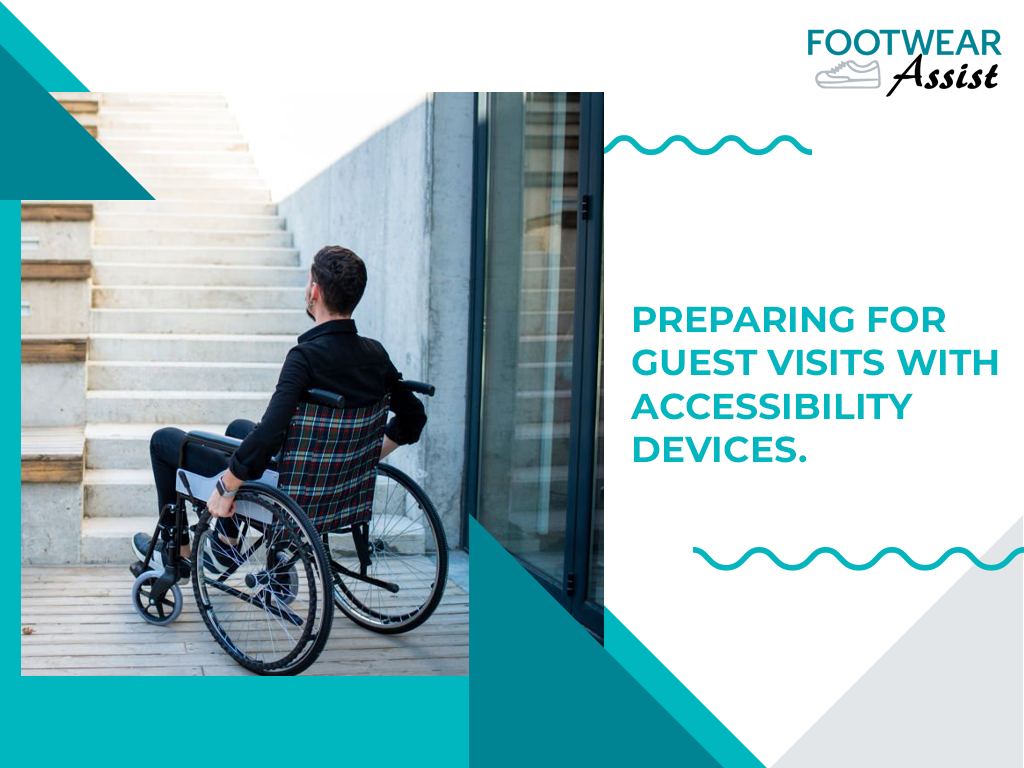We all face difficulties and obstacles in life, sometimes very serious ones. However, those with disabilities may encounter these issues more frequently. One major issue that many people with disabilities face is accessibility.
While most of us have never had to question our ability to enter a building or go about our daily tasks, for those of us who make use of accessibility devices, locations being inaccessible is a standard reality of life. We at Footwear Assist aim to alleviate some of the challenges of living with a disability, and today we’d like to share some ways that you can do the same in your own home.
Lack of Accessibility
The World Health Organization (WHO) has made clear that there are many difficulties that those with impairments must contend with when it comes to accessibility. From an inaccessible physical environment to a lack of assistive technology, among other things.
A news article about a new library in Queens, New York, went viral in 2019 as some of the most aesthetically stunning aspects of the library were also egregiously inaccessible to those with mobility issues.
How can a brand-new public structure that was created from the ground up and endorsed by numerous authorities be so glaringly inaccessible?
How We Can Help
Preparing our homes for relatives or friends with accessibility devices is the least we can do to ensure they feel welcomed, included, and equal. For example, there are many situations in which a family may require a home that is wheelchair accessible.
Some additions can be made to make a home simpler to navigate as well as more comfortable, even if wheelchair use may only be for a few months. Long-term accessibility device use may warrant thinking carefully about making physical adjustments to a home that can improve everyone’s quality of life.
Here are a few ideas to make your home more accessibility device friendly, whether someone needs assistance in the kitchen and bathroom or extra space to move a wheelchair around the house.
First and foremost, make sure to talk with your visitors in advance about what they need. Knowing your guest’s specific requirements will make accommodating them all the better.
- Build or purchase ramps
Anyone who has mobility issues will benefit from a ramp leading to a doorway, not only those in wheelchairs. Be careful to check your local building codes before you start building a ramp, however, as they usually require a permit.
- Doorways
Many wheelchairs and walkers are too large to fit through doorways without difficulty. It can be expensive to widen doorways (up to $1,000 in some circumstances), but you can add a few inches of space for very little money by using offset hinges to help swing the door clear of the opening.
- Grab rails
In the bathroom, grab bars will help with stability, especially around the shower and toilet. Most people can handle a bar with a normal 1-1/2-inch diameter.
Placing a device to help put on socks in the bathroom would be largely beneficial for relatives that require accessibility devices in the case that they need help putting socks on or trimming their toenails. A device such as the Footwear Assist is more than a sock aid; it offers users the ability to reach their feet both independently and with ease.
- Toilet riser
For people who struggle to bend over or stand up and sit down, a toilet riser can be extremely beneficial. Risers typically cost less than $50 and may be obtained at numerous drug stores and home improvement stores.
- Walk-in shower
Bathtubs can be difficult for people who have mobility challenges to get into and out of, let alone use. Consider turning the area into a step-in shower instead if your relative will be staying for an extended period of time or living with you. Adding a shower bench will also provide additional support.
- Mobility friendly flooring
Rugs and dense carpeting can be a tripping hazard for everyone as well as challenging for people using wheelchairs and walkers. Think about ceramic tile, vinyl, or hardwood flooring.
- Kitchen accessibility
The kitchen may need to be modified for residences that want to be accessibility device-friendly. To make daily tasks easier, try placing appliances next to the sink and counters. Place frequently used kitchen tools in lower cabinets for convenient access.
- Closet accessibility
Clear any closet rods and shelves on the lower levels for guests and family members with disabilities. Lower rods or pull-down rods can be added if your closets do not have any.
- Dressing accessibility
To make dressing and undressing easier, you can utilize a sock aid such as Footwear Assist in your closets and bathrooms. This will give your guests the ability to get ready for the day independently while they stay with you. It is a wonderful tool that can assist those with disabilities when putting on socks, clipping their toenails, putting on shoes, etc.
- Furniture accessibility
Make a route of at least 32 inches between furniture items to allow for easy movement. To ensure everyone can sit comfortably, you might need to lift some furniture. This can be done by attaching little wooden blocks or furniture coasters to the furniture’s legs.
If you are going to be entertaining guests that have disabilities and require accessibility devices, it’s of the utmost importance that you accommodate accordingly. By preparing your home for a wheelchair, or other accessibility devices, your guests will have an easier time going about their daily or nightly activities – and they deserve respect and forethought.
With no effort, Footwear Assist gives people fast and independent access to their feet so they can put on socks and shoes, bandages, trim or paint their nails. It is an excellent tool to provide your relatives with accessibility devices with the same level of comfort as you would any other guest.

